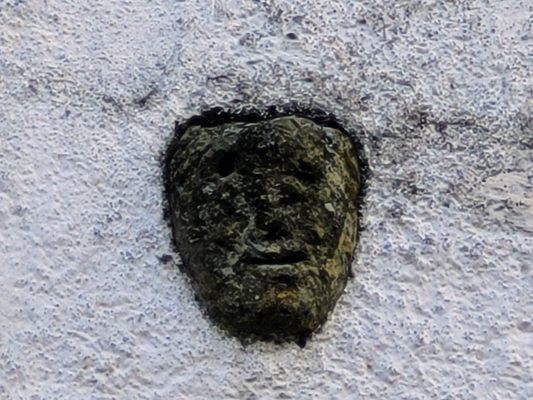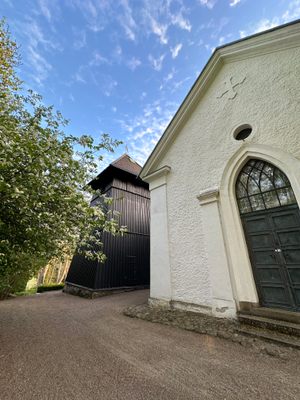About
While the Devil is occasionally used in church art to convey moral lessons and reinforce the consequences of sin, it’s unusual to find a combination of satanic imagery alongside local folklore within the context of sacred space. Though, one such exception can be observed on the exterior of Raus Church in southern Sweden, where a small stone face, believed to depict the devil, was strategically embedded above the main entrance to ward off trolls and malevolent beings.
Legend has it that during the construction of this 12th-century sandstone church, a local troll, who detested the sound of church bells, caused trouble by moving the building materials across the stream every night. Frustrated, the builders abandoned the site and instead erected the church in its current location nearby. Still discontented with the situation, the troll fled 26 miles (42 kilometers) northwest to Kullaberg. While there, he confided in some fishermen, expressing a desire to return home but was prevented because of the "jingling gray mare," a reference to the church and its chimes, which he was too afraid to name directly.
Three theories surround the stone head's origin. One suggests it represents Råå the Giant, credited with the church's construction, with the baptismal font serving as his hat. Another associates the face with Roland, a medieval Christian knight who achieved iconic status for his battles against Muslim forces in Spain. However, the prevailing belief today is that the head portrays the devil, employed as a safeguard against trolls.
Related Tags
Know Before You Go
Situated in Helsingborg's southern outskirts, the devil head is always visible. Free parking is available near the church, and for those who prefer public transport, bus no. 2 runs regularly from the downtown transportation hub, Knutpunkten, conveniently connecting to the Utgårdsgatan bus stop, just a short 12-minute walk away.
Published
October 10, 2023




























